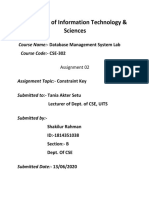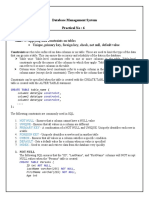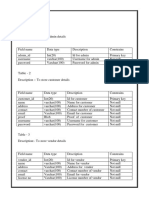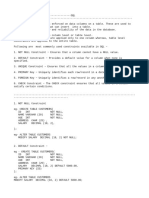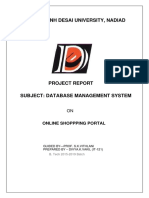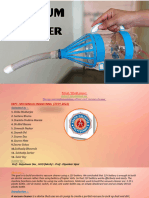0% found this document useful (0 votes)
75 views5 pagesMis SQL
The document contains SQL statements to create database tables for accounts, order details, orders, and products, along with constraints and indexes. It then provides sample insert statements to populate the accounts and products tables with initial data. The document also contains some sample SQL queries against courses and related database tables.
Uploaded by
Phước NguyễnCopyright
© © All Rights Reserved
We take content rights seriously. If you suspect this is your content, claim it here.
Available Formats
Download as PDF, TXT or read online on Scribd
0% found this document useful (0 votes)
75 views5 pagesMis SQL
The document contains SQL statements to create database tables for accounts, order details, orders, and products, along with constraints and indexes. It then provides sample insert statements to populate the accounts and products tables with initial data. The document also contains some sample SQL queries against courses and related database tables.
Uploaded by
Phước NguyễnCopyright
© © All Rights Reserved
We take content rights seriously. If you suspect this is your content, claim it here.
Available Formats
Download as PDF, TXT or read online on Scribd
/ 5












